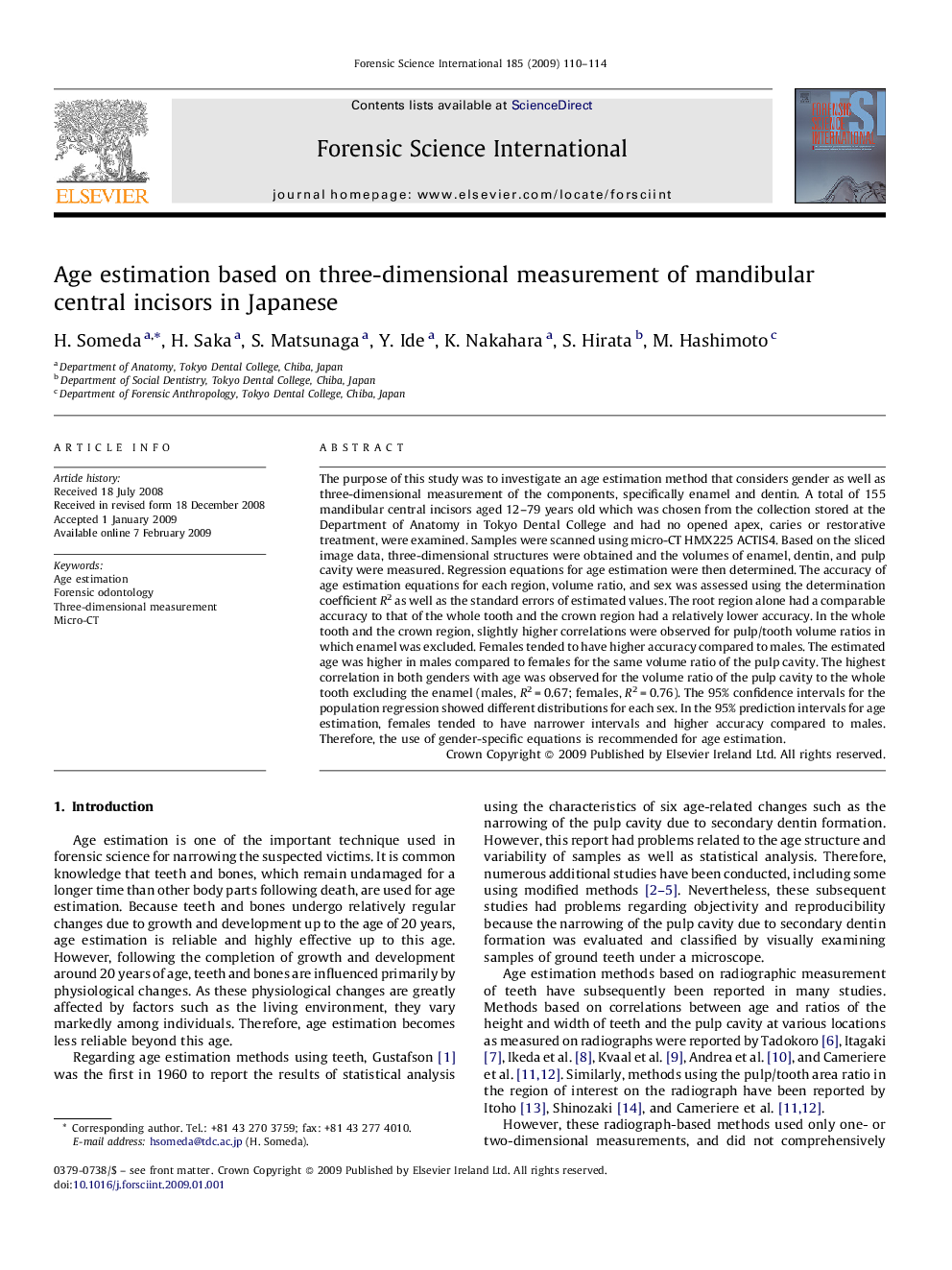| کد مقاله | کد نشریه | سال انتشار | مقاله انگلیسی | نسخه تمام متن |
|---|---|---|---|---|
| 97484 | 160495 | 2009 | 5 صفحه PDF | دانلود رایگان |

The purpose of this study was to investigate an age estimation method that considers gender as well as three-dimensional measurement of the components, specifically enamel and dentin. A total of 155 mandibular central incisors aged 12–79 years old which was chosen from the collection stored at the Department of Anatomy in Tokyo Dental College and had no opened apex, caries or restorative treatment, were examined. Samples were scanned using micro-CT HMX225 ACTIS4. Based on the sliced image data, three-dimensional structures were obtained and the volumes of enamel, dentin, and pulp cavity were measured. Regression equations for age estimation were then determined. The accuracy of age estimation equations for each region, volume ratio, and sex was assessed using the determination coefficient R2 as well as the standard errors of estimated values. The root region alone had a comparable accuracy to that of the whole tooth and the crown region had a relatively lower accuracy. In the whole tooth and the crown region, slightly higher correlations were observed for pulp/tooth volume ratios in which enamel was excluded. Females tended to have higher accuracy compared to males. The estimated age was higher in males compared to females for the same volume ratio of the pulp cavity. The highest correlation in both genders with age was observed for the volume ratio of the pulp cavity to the whole tooth excluding the enamel (males, R2 = 0.67; females, R2 = 0.76). The 95% confidence intervals for the population regression showed different distributions for each sex. In the 95% prediction intervals for age estimation, females tended to have narrower intervals and higher accuracy compared to males. Therefore, the use of gender-specific equations is recommended for age estimation.
Journal: Forensic Science International - Volume 185, Issues 1–3, 10 March 2009, Pages 110–114